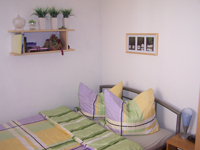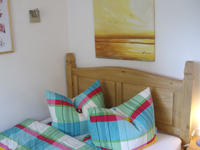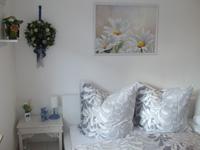With apartment Cologne in: Marienburg
A little further away from Cologne Cathedral, but just as beautiful!

Marienburg is geographically clearly located in the south of the cathedral city. Marienburg belongs to the city district Rodenkirchen and is managed with the district number 202. Attention for all those interested in real estate: Marienburg is one of the most expensive districts of Cologne!
| District number | Area | Inhabitants |
| 202 | 3.05 square kilometers | 7,000 |
Geographical location of Marienburg
The district is located directly opposite Cologne Poll on the right bank of the Rhine and is therefore naturally bounded by the Rhine. Further borders are the A4 motorway in the south and the districts Raderthal , Raderberg and to the west and north Bayenthal .
Historical development
Already in the year 20 AD, the Alteburg naval fort was built in the south of today's Rhine metropolis. The imposing structure stood approximately at the same height as the current street called "Im Römerkastell". More than a thousand people found space on the area of more than 7 hectares. In the course of the year (must have been around 100 AD) a stone fence was built to provide further protection for the residents. However, the building was destroyed again by the Franks in the year 276 AD.
.gif)
.gif)
.gif)
.gif)
.gif)
.gif)
.gif)
.gif)
.gif)
.gif)
Further development and development of the area did not take place until many years later. Namely in the year 1609 after Christ. A beautiful 20 acre park was then laid out on the old naval fort. This was implemented by Johann Wilhelm Joseph Huybens. Ludwig Böcking built the first industrial plant or company in this area: a lime kiln. However, Mr. Böcking sold the area in 1845 to a manufacturer named Paul Josef Hagen. Mr. Hagen was apparently interested in acquiring land and land in this area, as he had already bought the Marienburg manor in 1843. The "Alteburger Mühle" was then built on the site of the former fort.
The "Rheinische Aktienbrauerei Alteburg" founded in 1873 must be regarded as an important industrial building.
Gutshof Marienburg: Start of a special villa district
The Cologne merchant Ernst Leybold must be regarded as the intellectual father of this expensive residential area. He bought the Marienburg estate, built in 1845, complete with manor house and another 60 hectares of fields together with a friend. This was passed down through the history books as Mr. Adolph Davignon. This real estate package was sold by the Sal. Oppenheim bank, which is still active today. As early as 1871, Leybold bought the parts from Davignon and then wanted to sell or rent the entire area again in individual parts. However, business did not seem to be going as optimally as Ernst Leybold then had to lease the Marienburg estate in 1880 and moved into a rented apartment. But business must then have followed a positive course, as he subsequently founded the real estate company Leybold & Cie, from which the "Kölnische Immobiliengesellschaft AG" emerged over the years.
The villa district and its expansion have received a real boost with the incorporation into Cologne. The strategic road construction immediately passed into the hands of the well-known city architect Josef Stübben. The development of Marienburg started immediately and lasted approx. 1895 to 1925.

Beautiful, pompous villas have now been built by the following architects, among others:
- Paul Pott
- Bruno Paul
- Otto March
- Dominikus Böhm
- Theodor Merrill
The architects Merrill and Pott should stand out as the most important of this group. Architectural styles ranging from Art Nouveau, Historicism and Expressionism to Modernism were implemented. This villa district in Marienburg is still one of the most impressive districts of Cologne today due to its magnificent construction and its numerous green spaces and parks.
.gif)
.gif)
.gif)
.gif)
.gif)
.gif)
.gif)
.gif)
.gif)
.gif)
Holiday apartment Cologne tip
The Apartment Cologne recommends a short drive through the villa district. There you will see the "fortresses" of the rich and famous personalities of Cologne. High walls and lots of video cameras.
The Cologne nobility and celebrities
In such a noble and expensive area, of course, many rich and well-known people from Cologne settle in a very short time. After all, you want to live in style and stay "among yourself". A touch of exclusivity still envelops the Marienburg district today! Here is a small selection of old and new celebrities:
- Leonhard Tietz
- Ludwig Stollwerck
- Franz Stollwerck
- Josef Feinhals
- Hans Gerling
- Hans Kratzer
- Ingolf Lück
- Harald Schmidt
- Elke Heidenreich
- the Samwer brothers (known from startups like Wimdu or Zalando)
.gif)
.gif)
.gif)
.gif)
.gif)
.gif)
.gif)
Churches and places of interest
Here we want to briefly list the most important buildings:
- Evangelical Garrison Church of All Saints
- Evang. Marienburg Church
- the listed putti fountain
- Panther plastic in the Südpark
- the Cologne Fortress Museum
- Alteburger Mühle
So if you want to live nobly, exclusively and secluded, then you have come to the right place in Marienburg!
Alteburger Mühle
The historic Alteburger Mühle is located in the Cologne Veedel Marienburg. It was built at the end of the 18th century and was originally built as a windmill. No structure that has survived in Marienburg is older than the mill. The Altenburger Mühle was placed under monument protection by being entered on the list of monuments in Cologne on December 20, 1983. The building has been expanded several times and is now home to the trade department of the Polish Consulate General.
It is likely that the mill was built on the foundation of a round tower, which consisted of massive masonry made of Baltlava and was also built from other types of stone. The tower was first mentioned in 1209, together with a chapel. The two buildings were in Altenburg. The tower was probably built in the 12th / 13th centuries. Built in the 18th century, as the style of construction is similar to that of the Cologne city wall. From the 14th century this was called "Aldeburch". In 1782 the Cologne merchant Johann Wilhelm Huybens had an English garden laid out on the site, covering an area of 20 acres. A Dutch windmill was built on the remains of the tower by building up the tower stump. Above the tower stump, the gallery was rebuilt in brick and a three-storey mill tower was placed on top, which tapers towards the top. Brick was used for the construction of the tower and the frame of the walls was made of sandstone.
Gut Alte Burg
According to a purchase agreement from 1813, the Altenburg mill belonged to the "Gut Alte Burg", which also included a residential building, an economic building, a garden and farmland. The new owner Ludwig Böcking used the mill from 1835 as a bone pounding mill, which was used for a lime and bone distillery. As a result of a fire, the mill was partially destroyed in 1858. The real estate agent Paul Joseph Hagen sold the property to Bayenthaler Kölnische Maschinenbau-AG. The mansion was demolished and employees and direct houses were built instead just after 1870. A restaurant was built in the mill, with the gallery being modified into a viewing balcony. A wide staircase was built so that the balcony could be accessed by visitors, and a veranda was also created, which acted as a demarcation to the neighboring brewery.
The restoration had to cease operations by the First World War at the latest, after which the mill was used by different tenants for different purposes . The initiative of the architect Georg Falck led to a retaining wall being built around 1930 away from the street where the mill was located. The mill tower was newly built after it was burned out in World War II. In 1950/51, the medieval foundations were uncovered and based on these, a house was added to the mill. The gallery was also abolished as part of the construction work.
Ambassador in the mill
The office of the Trade Council of the People's Republic of Poland, which has its seat of government in Bonn and whose embassy is in Marienburg, moved to Altenburger Mühle in 1977 . The office acted as the embassy's trade department. The architects Helmut Plück and Manfred Walther designed a plan for the new use, which envisaged a one to five-story building with the mill tower in the headquarters. This plan was implemented in 1977/78 so that the Altenburger mill could be used again. In 1999 the German seat of government was relocated to Berlin and the Polish embassy moved to the capital. The branch office in Cologne became the Consulate General in 2001 and the office of the Trade Council as a trade department remained in Altenburger Mühle .
It is now called the Department of Trade and Investment. On the ground floor, the former mill serves as the entrance area for the consulate. The former round tower functions as a reception and office space. The Consulate General organizes the Marienburger Matineen concert series, which took place for the first time in 2014 on the premises of the mill. In 2013 the consulate moved to the MediaPark and since then the Alteburger Mühle has been the last location in Marienburg to house a foreign representation.
Your trip to Cologne
When traveling to Cologne you should definitely not live in Marienburg. There are no holiday apartments there either! The place is very far from the center of Cologne and is therefore unsuitable for your city trip. Book a holiday apartment Cologne with us! The best apartments in Cologne!



